With fuzzy leaves and pretty flowers that come in white, purple, and blue, African violets are a charming houseplant. This guide will show you exactly how to help your favourite houseplant thrive with African violet care tips that really work. Plus, learn how to propagate your plants too!
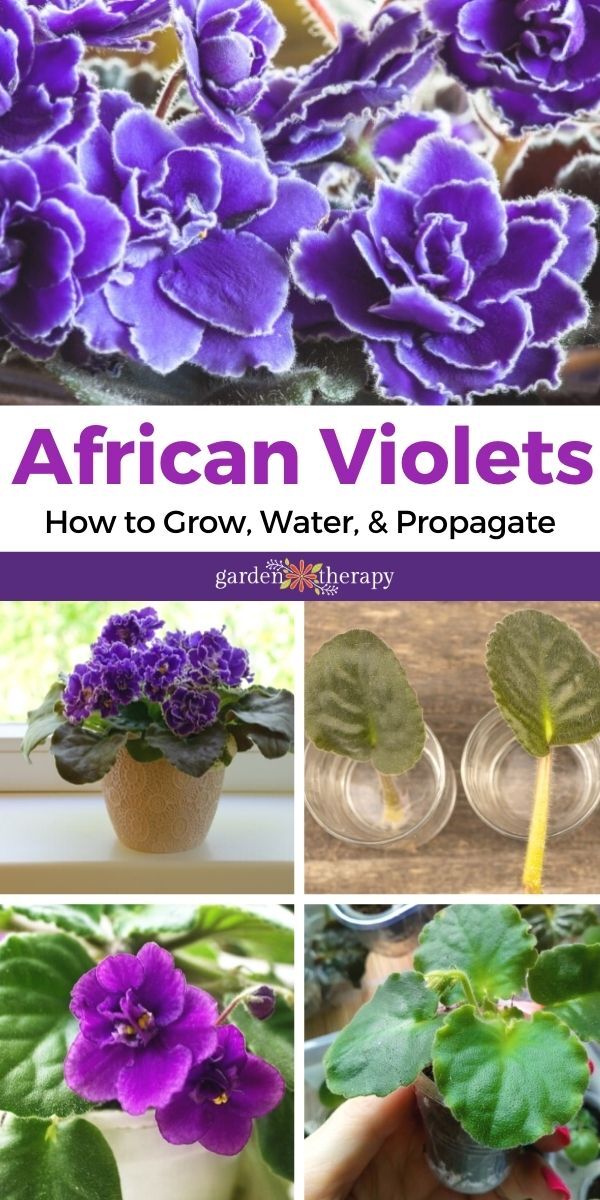
African violets are known as friendship plant and are often used as a symbol of loyalty, devotion, and faithfulness. For those reasons, it’s long been a favourite for gifting! Whether you purchased one of these cheerful plants or received one as a gift, this guide will help you keep them thriving.
I’ll show you how to care for African violets as well as some of my propagation tips so you can have violets galore! It truly is the gift that keeps giving.
With proper care, African violets can provide almost continuous blooms in a rainbow of colors and leaf shapes. Although flower size, petal-type, and color vary widely, plants generally grow from four to seven inches tall, with hairy leaves and tightly grouped clusters of flowers.
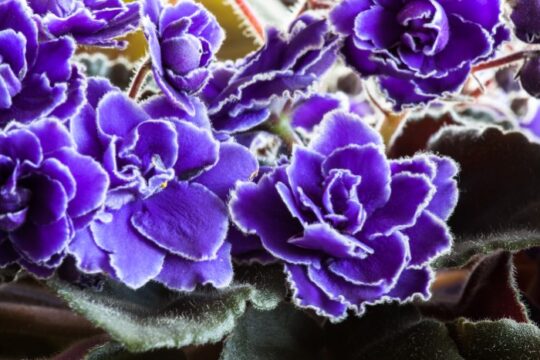
The African violet belongs to the family Saintpaulia and is native to Africa. They are one of the most popular cultivated houseplants in the world today and are particularly well suited to the home environment. There are now thousands of varieties in existence, with new hybrids being developed almost daily.
Basics of African Violet Care
Although African Violets are hardy little plants, they still require their own unique care. Follow these steps and you will have a happy little plant that likes to share their blooms with you.

Wicking African Violets for Better Water Delivery
Proper watering is essential to African violet care. In fact, keeping these plants healthy often comes down to watering. By far, the most common way to kill an African violet is to overwater it. There are a few things you can do to ensure you are properly watering your violet.
Always water at the base of the plant and avoid getting water on the leaves. Leaves are susceptible to rot if they get too moist. You also want to ensure you only water with room temperature water as cold water can chill the roots and cause your leaves to curl downwards. Only water once a week and allow the plant to completely dry between waterings.
One ingenious way of making sure your African violets are never over watered is by setting up a wicking system. To do so, draw three lengths of string from different points at the base of the plant down through the soil and out the hole at the bottom of the pot. With marbles or small stones, raise the pot off the drip tray by at least half an inch. Secure the strings under the layer of stones.
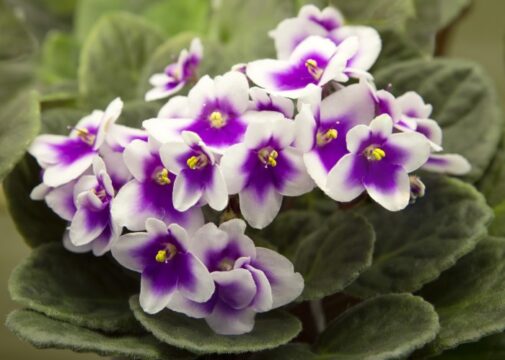
When you place water in the tray, it is drawn up through the strings into the planting medium where the roots have safe access to it. This method of watering ensures that the plant receives a regular source of moisture but is never left with its roots sitting in water.
The Best Soil for African Violets
For African violets to flourish, they require a special soil composed of two parts peat moss, one part perlite, and one part standard potting mix. This keeps the soil well aerated. The soil should be loose and well-drained. You can also add organic matter to the mix if you wish.
When selecting pots, the smaller the better! African violets do well in small pots and don’t necessarily need to be repotted very often. You can repot into a slightly larger pot once a year, but they also will flourish and produce more blooms when rootbound.
African Violet Care – Keeping Them Healthy
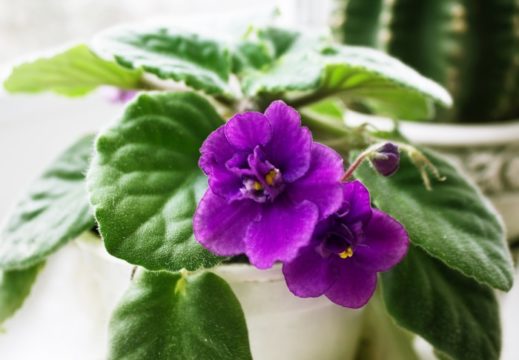
African violets are very hardy and do best in indirect or filtered sunlight. If it is getting too much light, you may notice brown spots forming on the plant. On the opposite side, a violet that is not getting enough light will produce thin, dark leaves and leggy stems. Other indicators include yellowing leaves and failure to produce blooms.
To ensure your plant is getting equal amounts of light, try rotating the pot every time you water. Otherwise, you may notice your plant reaching for the light. This isn’t unique to violets and is actually a good routine to implement for most houseplants.
I recommend fertilizing your violets every two weeks during the spring and summer season. They also need an acidic fertilizer specially designed for them. You can fertilize with specific African violet food or a fertilizer with a high phosphorous level. If you notice reduced flowers and pale leaves, it could mean that your violet is not getting enough fertilizer.
When it comes to temperature, your African violet will follow you. If you feel comfortable, so will your African violet. They also really like humidity, so if that’s something you also enjoy, then you have even more traits in common!
Although their temperature requirements are not critical if they are maintained in the home, they should be kept well back from the window if temperatures outside are going to be near or below freezing.
Encouraging More Blooms
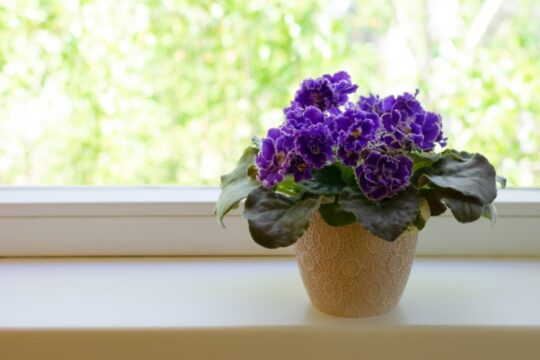
Most people buy African violets to appreciate their blooms. When we fail to get blooms or have very few, that’s when we begin to scratch our heads. If there are no flowers, it could mean the plant is not getting enough light. Alternatively, violets need at least eight hours of darkness to bloom which could be an issue if you use grow lights.
Another reason could actually be too many leaves. Each rosette of leaves will produce one round of flowers. If you prune off the largest outer layer of leaves, it will encourage more violet blooms.
As mentioned earlier, keeping your violet rootbound can also encourage them to bloom. Finally, always remove spent flowers and foliage to encourage your violet to produce more. Look at your violet and see if any of these may be the culprit behind zero blooms!
Propagating African Violets
Who doesn’t want a ton of tiny little African violets!? I like to propagate African violets often since they look so lovely in clusters. Always be sure to start off with more cuttings than you think you’ll need as all of them may not be successful.
Whether you want more or you are propagating a bunch for gifting, this is my sure-fire way to propagate violets.
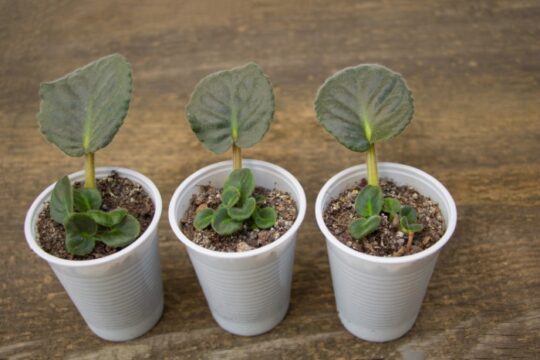
- Choose healthy leaves from the middle of the plant as the outer ones will be too old and the inner ones will be too young.
- Make a cutting at the base of the stem, careful to leave no stem on the host plant as it will rot. Shorten your cuttings to one inch.
- Water your soil and place into SMALL containers. Poke a pencil in the soil to make room for the stem.
- Optional. Lightly dip your stem into a rooting hormone and tap off the excess. This will help encourage the leaf to grow roots.
- Place your stem into the soil, letting the tip of the leaf just touch the surface of the soil. Pat down the soil firmly.
- Put a support behind your leaf to help hold it up.
- Optional. Place your pots in a makeshift greenhouse such as an empty salad container. This will help to hold in humidity and keep warm temperatures.
- Place your cutting in a well-lit, bright spot that won’t get too hot. Wait and be patient!
- Transplant when the leaf has sprouted a good root system and grown a few small leaflets.

I hope by now African violets are a little less intimidating than they were before! With a little planning and understanding, African violets can beautify your home and be fun and easy to grow.

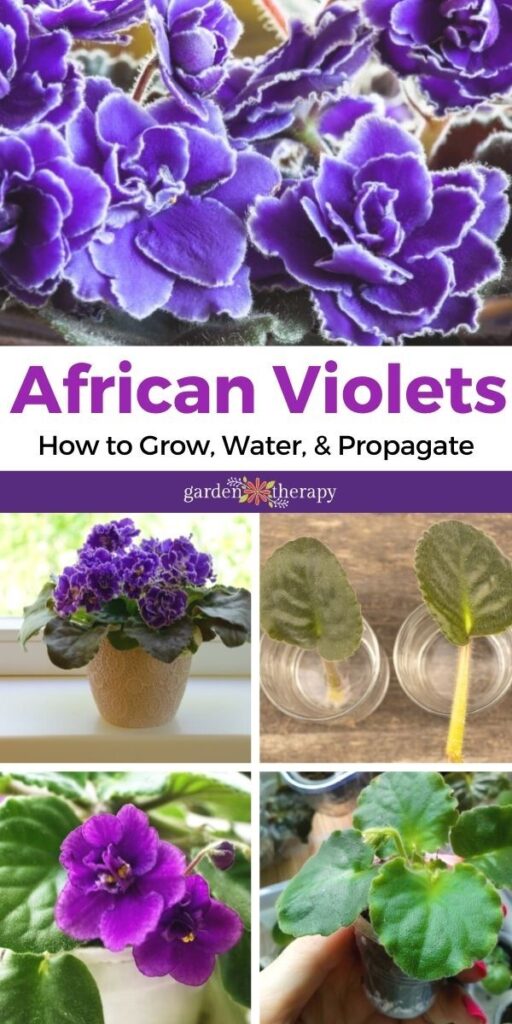



I have had Violets for years and everything you said is right on. Mine bloom all the time so I can enjoy the beautiful colors and they make you happy. Thanks for sharing this.
Love your articles.
Patricia
Article easy to read and understand. Very helpful. Thank you
My violet is very old and i have cut the stem to about 2 inches and exposed the core of the stem and repotted it and then bagged it for 7 days, it grew wonderfully and bloomed. But now a year later, it is doing the same root above soil is about 8 inches and the leaves are bunched upwards and kinda curled up. What do i do?
I had mine in the east window, bloomed nice, then, it just quit.
The article is very Interesting.
Thanks, I’m thinking of getting a couple, and this is a great resource for getting the environment ready before bringing them home.